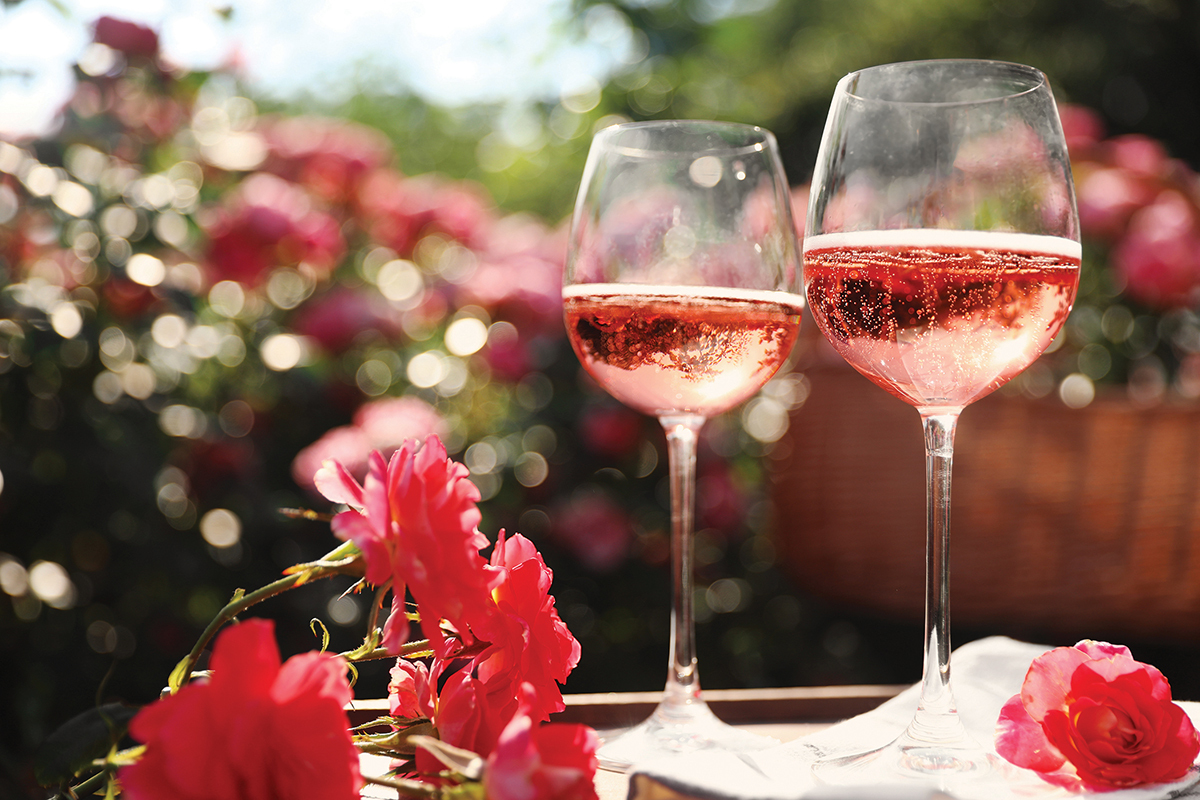Rosé All Day (And Year)

When I opened my shop almost 13 years ago, I barely knew what rosé was. Today? Oh my word. Now it’s a year-round obsession! We have gone from two cases sold per year to almost 200 cases per year. And it’s no wonder ... North Carolina is the perfect state for enjoying a good rosé all day – and all year. Whether sipped on a cool wintery afternoon or savored on a sizzling summer night, rosé is always on the menu around here. The most-of-the-time great weather, the delicious food, and the stunning sunsets that abound make rosé an integral part of wine drinking in the Tarheel state.
There are four different ways rosé is made. Let’s take a peek behind the wine-making curtain and learn a bit about them. Of course, food pairing is a huge part of the taste of rosé, so some suggestions to enjoy with your favorite bottle will be added after each style.
LIMITED SKIN MACERATION
Most rosés are made this way. Basically, this process means that a red wine has already been made, but then its winemaker comes back and takes the skins of the grapes and soaks them. The soaking usually takes 24 to 48 hours. The remaining pigment of the grapes is left soaking to create pink juice. Then the juice is taken and ferments for a period of time, creating a dry wine. Shorter fermentation leads to more sugar, resulting in a sweeter version, such as White Zinfandel. Not knocking that, but it must ferment longer … just saying! Food pairing: Oysters.
DIRECT PRESSING
About three years ago, I won a trip to Chile (thank you for buying all of that Chilean wine that made that possible). I learned quite a bit about winemaking on that trip, but one of the processes that stuck with me the most is the way Calcu rosé is made. They do not re-use grapes from other wines; instead, they have specific vineyards dedicated solely to the rosé making program. In this scenario, fully ripened grapes are pressed about two-thirds of the
way to create the rosé. While these versions can be lighter in color many times, they have the most flavor, because the drinker is experiencing the full power and taste of the original grape. Food pairing: Burgers with all the fixings, especially bacon and feta.
SAIGNÉE METHOD
The saignée method literally refers to the bleeding of grapes or red wine already in the vats and fermenting. I asked Michael Hirby, my good friend and outstanding winemaker and owner of Relic Wine Cellars, about his process. “We use the saignée method, simply because we don’t bring in any fruit explicitly for rosé. We try to bleed the vats as soon as possible.” He added there will not be much 2020 rosé from Relic this year, as there was not enough wine to sacrifice a little bit for it. I lobbied for it all! He usually uses Grenache, which is the main grape used in rosé from France, where the processes originated. Michael’s reference to 2020 brings up another valuable point about making rosé – because of the limited skin contact, it is best to buy rosé from the previous year in which you are living. This is a wine that is usually unstable and is not meant to age. That fresh bowl of strawberry nose and crispness is most effective when consumed out of the gate. Do not age! Food pairing: Barbecue, all the way.
BLENDING
Yes, there is a fourth process – blending. However, due to many rules, particularly in Europe, this method is often frowned upon. The one exception? Champagne. Of course, Champagne, where the weather is terrible and most good Champagne is the result of blending multiple years together. Therefore, it is not a stretch to make sparkling blends of rosé. Food pairing: Salads, or by itself while meal prepping.
Anyone who knows me and has read my previous articles in CIRCA is aware of my philosophy – if you think a wine tastes good, then it is. So now that spring is here and the chilly temperatures of winter are in our rearview mirror, get outside and enjoy our state’s amazing weather with a nice glass of rosé. Cheers!
Joe O'Keefe
Owner of Wine and Beer 101, offering deliveries throughout Wake Forest, virtual tastings, and socially-distanced live music. Stop by anytime for a drink or to chat.

